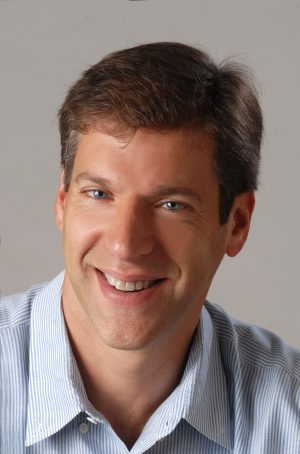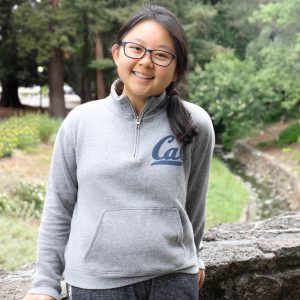By Tamara Straus
 Daniel Kammen asserts that everything he has learned about communicating scientific research to a lay audience has been “by accident.” Yet Kammen, chair of the Energy and Resources Group at UC Berkeley who also holds parallel appointments in the Goldman School of Public Policy and the Department of Nuclear Engineering—is for all intents and purposes a master communicator to the press, government, and non-scientists in general.
Daniel Kammen asserts that everything he has learned about communicating scientific research to a lay audience has been “by accident.” Yet Kammen, chair of the Energy and Resources Group at UC Berkeley who also holds parallel appointments in the Goldman School of Public Policy and the Department of Nuclear Engineering—is for all intents and purposes a master communicator to the press, government, and non-scientists in general.
First, Kammen is not afraid of the mainstream media. He is a frequent contributor on the subjects of climate science and clean energy to The New York Times, The Guardian, and other news outlets and has appeared on 60 Minutes (twice), NOVA Frontline, and hosted the six-part Discovery Channel series “Ecopolis.”
Second, he is a prolific academic and government contributor, having authored or co-authored 12 books, written more than 380 peer-reviewed journal publications, testified more than 40 times to U.S. state and federal congressional briefings, provided governments with more than 50 technical reports, and served the State of California and U.S. federal government in expert and advisory capacities. In terms of academic appointments, Kammen is also is founding director of the Renewable and Appropriate Energy Laboratory (RAEL).
Third, Kammen has worked (and communicated) outside of university. He has served as the World Bank’s Chief Technical Specialist for Renewable Energy and Energy Efficiency and as the U.S. State Department’s Environment and Climate Partnership for the Americas Fellow and later as Science Envoy for President Obama and Secretary of State John Kerry. He also has founded or is on the board of over 10 companies.
At an InFEWS lecture at the Blum Center for Developing Economies on Nov. 14, Kammen argued that although many scientific researchers may loathe to translate their work for non-scientists, they need to learn how to do it—individually or preferably in teams, as working with the press and reaching government can be difficult.
“If you’re not intentional about how you’re communicating your science, what you’re saying is someone else should write your narrative,” said Kammen. “And generally, you don’t want someone else writing your narrative.”
Kammen gave the example of his research on corn-based ethanol. In the Jan. 27, 2006 issue of Science, he and his co-authors provided an analysis of six previous corn ethanol studies. By reverse-engineering a suite of models and studies, the team concluded that ethanol can be seen as renewable energy if the source of biomass is sustainable and that many important environmental effects of biofuel production are poorly understood. The first conclusion pleased the corn ethanol industry, especially when they read articles stating ethanol can replace gasoline with big energy savings. Other articles highlighted the problem of finding sustainable biofuel resources, such as organic urban waste. However, the main finding of the paper was that the transition from gasoline to ethanol would be worth it only if the ethanol could be produced not from corn but from woody, fibrous plants: cellulose.
For Kammen, the varied press reaction to his Science paper underscored the need to frame the discussion. In fact, he worked closely with Berkeley’s Public Affairs department on a press release to make the paper’s points clear.
“We then worked with the media as they came to us,” he said. “I went on 60 Minutes to clarify that cellulosal ethanol is the only one that is climate reducer. This effort paid off, as our paper was one useful element of a campus/LBL/University of Illinois effort that resulted in winning the $500 million grant for the bioscience industry.”
Kammen said another communications pitfall for scientific researchers is overemphasizing new results. As exciting as they are, he counseled, they can get taken as an end point. He referenced an Oct. 31 Nature paper that was rushed out to follow the publication of the “Global Warming of 1.5 °C” IPCC report. The researchers reported that ocean temperatures had warmed 60 percent more than outlined by the United Nations’ Intergovernmental Panel on Climate Change. However, this conclusion was proved incorrect by mathematician Nic Lewis, who is also a critic of the scientific consensus around human-induced warming. When Ralph Keeling, the coauthor of the Science paper, redid the calculations he was forced to admit the ocean warming calculation was vastly overstated.
Kammen may wring his hands over such science communications errors, but he is adamant there’s no such thing as science that’s too complicated to translate for a non-technical audience.
“You hear scientists say, I’m working on a really interesting, esoteric topic and hence I can’t communicate it in 90 seconds,” he griped. “I don’t believe that at all. If you can do some sort of the bumper sticker or elevator pitch of what you’re doing—you don’t know what you’re doing.”
Like many, Kammen feels overwhelmed by social media, and asserts he is not adept in the self-publishing platforms. Yet he has scored one major social media coup. On August 27, 2017, he resigned from his position at the State Department’s science envoy to protest President Trump’s comments on white supremacist violence, stating on twitter (@dan_kammen): “Your response to Charlottesville enables racism, sexism, & harms our country and planet.” Kammen’s letter had a not-so-subtle message: the first letter of each paragraph spelled out the word “IMPEACH.”
Kammen’s release of this acrostic-laden resignation was highly strategic. He posted it on Twitter at 6 am PT—so it would be read in multiple time zones that day—and he asked his friend with the largest Twitter following to retweet it. That friend was J.K Rowling, author of the Harry Potter series, who helped his message go viral, eventually logging 42,000 retweets and 120,000 likes.
Kammen is better positioned than many researchers to attract public attention because his field is what he calls “solutions science,” combining science and economics to solve problems of climate change. But no one can accuse him of not working around the clock to develop and communicate technological solutions to global warming. One of his favored tactics is easily understandable visuals. At Blum Hall, he presented a video rendering of ice cover reduction based on satellite images of the North Pole over almost 40 years.
“This kind of visualization gives you a theory-free picture of where we’ve gone,” said Kammen, adding: “For me, communicating with these visualizations are massively more useful than the scientific blocks.”
Words he finds trickier, though he is willing to appropriate others. He explained that he borrowed the term “green jobs dividend” from a U.S. Senate Committee meeting on clean energy chaired by Senators John Kerry and John McCain. And he admitted his word choice is not always the wisest, referencing the time he got behind the moniker “Berkeley First” for a national clean energy investment plan for property owners.
“This was poorly thought out. Nobody outside Berkeley wants to do what Berkeley does,” he said, explaining the program eventually was called PACE (Property Assessed Clean Energy), a term coined by a New York financier.
Among the questions from the audience at the Blum Center was one often asked: What to do about the clunker term “global warming”? Kammen admitted it’s been a communications disaster, as “global warming sounds like a good thing—rich people in poor countries make most of the world policy, and for most of the cities global warming sounds good.”
Still, Kammen believes climate change is the right term, even though “everyone in communications says it’s too nerdy. Change doesn’t have a direction, and climate is something that’s all around us. What we’re trying to say is that we are relatively well adapted to the world we live in today, but deviations from that are likely to be more costly than beneficial. That doesn’t work on a bumper sticker.”
Though Kammen has been disappointed by some of his press interactions, he is firm that the “press process” is the best way to interact with and influence government. He has come to that conclusion through his work enabling the approval of a $1.26 billion transmission project linking renewable energy resources in Kenya and Ethiopia and in communicating the need for a major transportation loan to China for the 10-fold expansion of electric vehicles.
“Governments don’t want the academic paper,” said Kammen. “In fact, if they say we like your vehicle policy for China, even if you wrote a paper with that exact title—they don’t want to read it and they’re not going to read it. They actually want you to write that press release and say, based on this paper, which was peer-reviewed, we recommend the following….”
The InFEWS program is supported by the National Science Foundation (infews.berkeley.edu ; DGE # 1633740).
 The UC system is often lauded for its ability to cultivate socioeconomic mobility. A 2015 New York Times study placed UC campuses in six of the seven top spots in its index of economic diversity, and the UC system performed the strongest in this year’s U.S. News & Report Ranking on social mobility.
The UC system is often lauded for its ability to cultivate socioeconomic mobility. A 2015 New York Times study placed UC campuses in six of the seven top spots in its index of economic diversity, and the UC system performed the strongest in this year’s U.S. News & Report Ranking on social mobility. 

 Daniel Kammen asserts that everything he has learned about communicating scientific research to a lay audience has been “by accident.” Yet Kammen, chair of the Energy and Resources Group at UC Berkeley who also holds parallel appointments in the Goldman School of Public Policy and the Department of Nuclear Engineering—is for all intents and purposes a master communicator to the press, government, and non-scientists in general.
Daniel Kammen asserts that everything he has learned about communicating scientific research to a lay audience has been “by accident.” Yet Kammen, chair of the Energy and Resources Group at UC Berkeley who also holds parallel appointments in the Goldman School of Public Policy and the Department of Nuclear Engineering—is for all intents and purposes a master communicator to the press, government, and non-scientists in general.